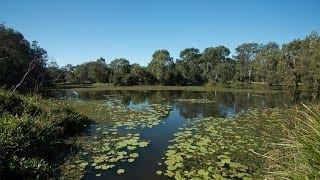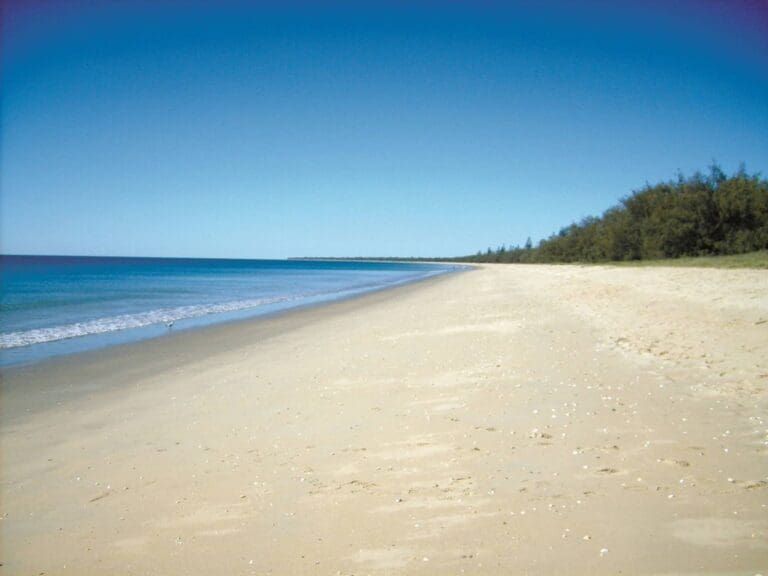This hike is classified as Grade 3 (Moderate) due to its distance exceeding 10km. While the terrain itself is relatively easy and may be suitable for all abilities, the long distance requires a greater level of fitness and preparation. Feel free to turn back at any point for a shorter adventure.
Discover the spirit of the Bundaberg Region, stroll along the regions diverse beaches. Burnett Heads to Bargara will see you venturing from the marina, along Oaks Beach through the turtle nesting grounds at Mon Repos, following the coastline down Nielson Park, past the coastal town of Bargara to Kelly's Beach.
For more information on this hiking trail, please visit Queensland.com
Got some great shots from this hike? Upload your photos here to inspire others and show off the beauty of the trail!
Submitting your photos doesn’t mean you lose ownership. You can be credited for your contributions, and you can request removal at any time.
Please don’t copy GPX files or content from this site to AllTrails or other platforms. Each trail has been personally mapped, documented, and refined to support Australia’s bushwalking and hiking community. While some details come from land managers, every listing reflects significant personal effort. This is a free, community-driven initiative—your respect helps keep it that way.
It looks like I don’t have a GPX file for this trail yet. If you have one to share, please email it to me! I’ll verify it against official maps before adding it to help other hikers have a safer, easier experience. Thanks for contributing to a better hiking resource.
Getting there
Getting to the trailhead: Bundaberg.
Closest towns to this walk: Avenell Heights, Avondale, Bargara, Bundaberg East, Burnett Heads, Childers, Gin Gin
About the region
Bundaberg is a major centre within Queensland's broader Wide Bay-Burnett geographical region and the headquarters of the Bundaberg Regional Council. The city is on the Burnett River, approximately 385 kilometres (239 mi) north of the state capital, Brisbane, and 15 kilometres (9.3 mi) inland from the coast. The local Aboriginal group is the Taribelang Bunda people.
The first Europeans in the area were timbergetters and co-founders of Bundaberg, John and Gavin Steuart who arrived in 1867. The town was surveyed in 1870. By 1881 it was gazetted as a municipality (the Borough of Bundaberg). It grew rapidly into a town by 1902 and a city by 1913.
Similar walks nearby
Looking for more walks in or near Bundaberg? Try these trails with a similar difficulty grade.
Favourite

Favourite

Burrum Coast National Park
Favourite

Burrum Coast National Park
Favourite

Track grade
Grade 1 (All-abilities) - Perfect for Families and Beginners: Grade 1 on the
AWTGS represents the easiest walking tracks, perfect for families with young children or those new to bushwalking. No prior experience is required. These gentle walks feature a flat, even surface with no steps or steep sections. They are suitable for wheelchair users with assistance due to the even terrain. The total distance of a Grade 1 walk is typically no greater than 5 kilometers, making them a comfortable and manageable option for all ages and fitness levels.
Explore safe
Plan ahead and hike safely! Carry enough water, pack layers for changing conditions, and bring safety gear like a torch, PLB, and reliable communication device. Check official sources for trail updates, closures, and access requirements, and review local weather and bushfire advice. Most importantly, share your plans with someone before you go. Being prepared makes for a safer and more enjoyable hike! Stay Safe, Explore More, and Always #ExploreSafe.
Packing checklists
What you carry in your pack depends on factors like weather, terrain, and your adventure type. Not sure what to bring? My free planning, food, and packing checklists are a great starting point, covering day hikes, overnight trips, and multi-day adventures. Use them to customise your kit and always prioritise safety.
Let someone know
Before heading out, take a moment to fill out your trip intentions form. It’s a quick way to share your hike details with family or friends. If something goes wrong, they can notify emergency services, ensuring a faster response and peace of mind. Stay safe and enjoy your adventure
Suggest an edit
Spotted a change on this trail? Maybe there are new features, the route has shifted, or the trail is permanently closed. Whatever the update, I’d love your input. Your feedback helps fellow hikers stay informed and ensures that our trail info stays fresh and reliable.






